Search the Special Collections and Archives Portal
Search Results
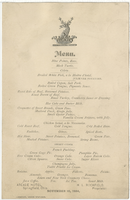
Arcade Hotel menu, November 16, 1884
Date
1884-11-16
Archival Collection
Description
Restaurant: Arcade Hotel (Springfield, Ohio) Location: Springfield, Ohio, United States
Text

Arcade Hotel, menu, February 1, 1885
Date
1885-02-01
Archival Collection
Description
Restaurant: Arcade Hotel (Springfield, Ohio) Location: Springfield, Ohio, United States
Text
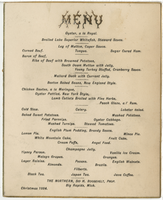
Christmas menu, 1884, The Northern
Date
1884-12-25
Archival Collection
Description
Note: The Northern Hotel is commonly known as "The Northern." Restaurant: The Northern Location: Big Rapids, Michigan, United States
Text
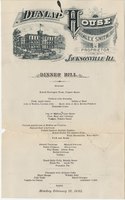
Dunlap House menu, Monday, February 12, 1883
Date
1883-02-12
Archival Collection
Description
Restaurant: Dunlap House Location: Jacksonville, Illinois, United States
Text
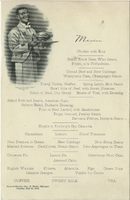
Sloane House menu, Sunday, May 25, 1884
Date
1884-05-25
Archival Collection
Description
Restaurant: Sloane House (Restaurant: Sundusky, Ohio) Location: Sandusky, Ohio, United States
Text
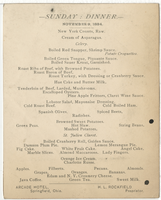
Arcade Hotel Sunday dinner menu, November 9, 1884
Date
1884-11-09
Archival Collection
Description
Restaurant: Arcade Hotel (Springfield, Ohio) Location: Springfield, Ohio, United States
Text
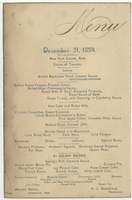
Arcade Hotel menu, December 21, 1884
Date
1884-12-21
Archival Collection
Description
Restaurant: Arcade Hotel (Springfield, Ohio) Location: Springfield, Ohio, United States
Text
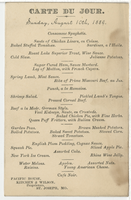
Pacific House menu, Sunday, August 10, 1884
Date
1884-08-10
Archival Collection
Description
Note: Menu has title: "Carte Du Jour" Restaurant: Pacific House Location: St. Joseph, Missouri, United States
Text
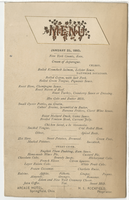
Arcade Hotel menu, January 25, 1885
Date
1885-01-25
Archival Collection
Description
Restaurant: Arcade Hotel (Springfield, Ohio) Location: Springfield, Ohio, United States
Text
Vern Lanegrasse Papers
Identifier
MS-00295
Abstract
The Vern Lanegrasse Papers (1961-2010) consist of materials from the Brotherhood of the Knights of the Vine and the California Restaurant Writers Association as well as event programs, menus, and other materials related to food and wine.
Archival Collection
Pagination
Refine my results
Content Type
Creator or Contributor
Subject
Archival Collection
Digital Project
Resource Type
Year
Material Type
Place
Language
Records Classification
